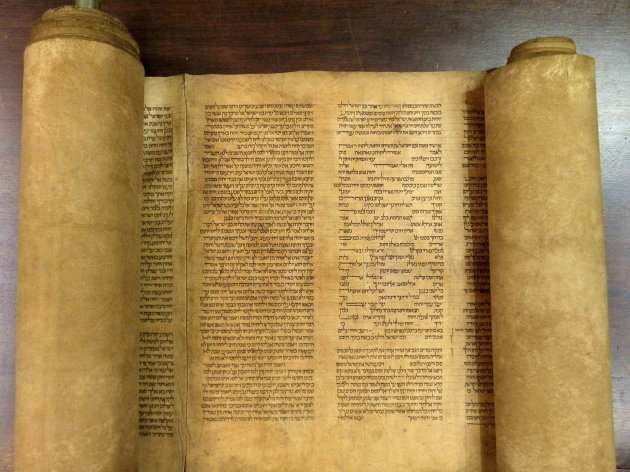ROME (AP) — An Italian expert in Hebrew manuscripts has discovered the oldest known complete Torah scroll,
a sheepskin document dating from 1155-1225. It was right under his
nose, in the University of Bologna library, where it had been mistakenly
catalogued a century ago as dating from the 17th century.
The find is not the oldest Torah
text in the world: the Leningrad and the Aleppo Bibles — both Hebrew codexes, or books — pre-date the Bologna scroll by more than 200
years but this is the oldest Torah scroll of the Pentateuch, the five
books of Moses, according to Mauro Perani, a professor of Hebrew in the University of Bologna's cultural heritage department.
Such scrolls — this one is 36 meters (40 yards) long and 64 centimeters (25 inches) high — are unveiled in synagogues on the Sabbath and holidays, and portions are read aloud in public. Few such scrolls have survived since old or damaged Torahs are buried or stored in a closed room in a synagogue.
In a telephone interview on Wednesday, Perani said he was updating the library's Hebrew manuscript catalogue when he stumbled upon the scroll in February. He immediately recognized the scroll had been wrongly dated by the last cataloguer in 1889 and he recognized that the script and graphic notations were far older.
Specifically, the scroll does not account for the rabbinical rules that standardized how the Pentateuch should be copied as established by Maimonides in the late 12th century. The scroll contains many features and markings that would be forbidden under those rules, Perani said.
The 1889 cataloguer, Jewish, Leonello Modona, had described the letters in the scroll as "an Italian script, rather clumsy-looking, in which certain letters, as well as the usual crowns and strokes show uncommon and strange appendices," according to the University of Bologna release. Perani, however, saw in the document an elegant script with square letters of Babylonian tradition.
Perani told The Associated Press it was "completely normal" for a cataloguer to make such a mistake in the late 1800s, given the "science of manuscripts was not yet born."
Outside experts say the finding was important, even though older Hebrew Bibles do exist.
"It is fairly big news," said James Aiken, a lecturer in Hebrew and Old Testament studies at Cambridge University. "Hebrew scholars get excited by very small things, but it certainly is important and clearly looks like a very beautiful scroll."
However, Giovanni Garbini, a leading expert on ancient Semitic languages and retired professor at Rome's La Sapienza university, said the discovery does not change much about what the world knows about Hebrew manuscripts. "It's an example of an ancient scroll, but from the point of view of knowledge, it doesn't change anything," he said in a telephone interview.
But Stephen Phann, acting president of the University of the Holy Land in Jerusalem and an expert in ancient Jewish manuscripts, said if accurately dated, the scroll is a rare and important find. "We don't have anything much from that period," Phann said. There are far older scraps of Torah scrolls that can be dated back to the 8th century, but Phann said it was rare to find a complete manuscript. The find was also emotionally important because the scroll, as opposed to a bound book, is used for reading Torah portions throughout the year in synagogue. "It's almost a friendship — that they have come to know the Torah scroll in their midst, and they draw their knowledge and focus on worship on how they live their daily life," Phann said.
Perani asserts it remains a mystery how the scroll came to be part of the Bologna university library but he anticipates further study will now begin. The scroll remains in the library and does not require any extra conservation precautions beyond what it already has, he said.
___

No comments:
Post a Comment